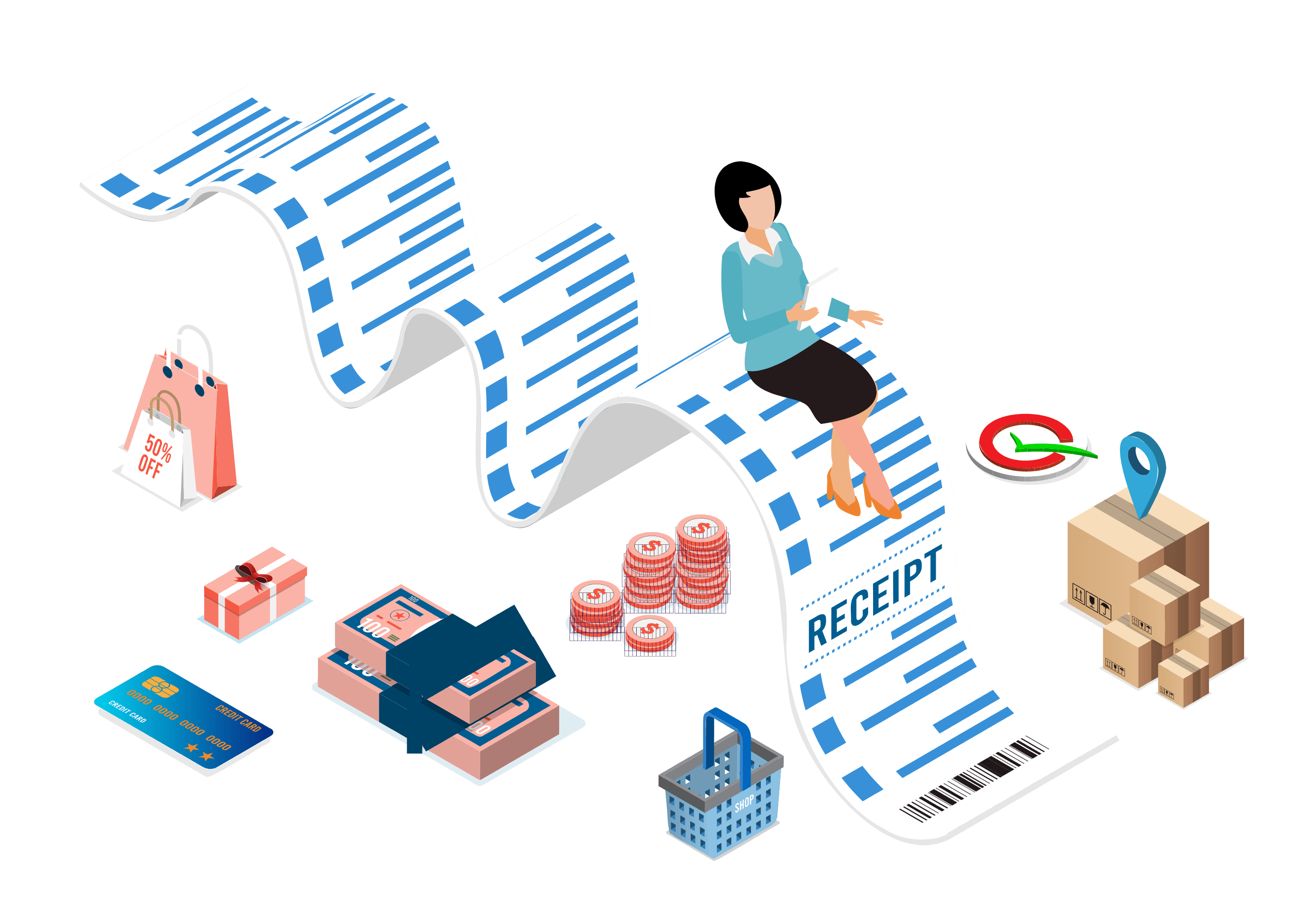
Home »
The Ultimate Guide to Understanding the Quote to Cash Process
Unveil the journey from quotes to revenue, optimizing your business operations effectively.
What is the Quote to Cash Process?
The Quote to Cash (QTC) process refers to the end-to-end process that businesses follow to deliver products or services to their customers and receive payment in return. It encompasses all the steps from the initial sales quote to the final payment receipt. The QTC process is a vital part of any business’s operations, as it helps organizations streamline their sales, order fulfillment, and invoicing processes.
The QTC process begins with the quote or proposal, which outlines the products or services the business will provide and the associated costs. Once the customer approves the quote, the business moves on to the contract and order processing stages. The contract outlines the terms of the agreement, while the order processing stage involves creating a purchase order and initiating the fulfillment of the order.

Once the product or service has been fulfilled, the business issues an invoice to the customer, which details the charges associated with the order. The payment process follows, which includes the customer making payment for the products or services provided.
The QTC process is important because it helps businesses ensure that their operations run smoothly, from the first interaction with the customer to the final payment received. By following a standardized process for sales and order fulfillment, businesses can ensure that they are delivering a consistent experience to their customers. This can improve customer satisfaction and loyalty, which can lead to repeat business and positive word-of-mouth referrals.
Why is the Quote to Cash Process Important?
The Quote to Cash process is important because it:
- Provides a standardized process for sales and order fulfilment.
- Helps improve customer satisfaction and loyalty.
- Reduces operational costs by minimizing errors and increasing efficiency.
- Enables organizations to operate more profitably.
- Helps organizations meet customer demands in a timely manner.
- Enables accurate forecasting of revenue and cash flow.
- Provides better control and visibility over the entire sales process.
- Helps organizations identify bottlenecks and areas for process improvement.
- Improves collaboration between different departments involved in the sales process.
- Enhances compliance with regulatory requirements and reduces legal risks.
10 Steps of Quote to Cash Process

Configuration
The initial step in the QTC process is configuration, during which the sales team seeks to determine the best combination of goods and services to satisfy the demands of the client. With the complexity of products and transactions in the current business climate, offering the ideal mix of products and services to the client is crucial to closing the deal.
It is a crucial stage in the quote-to-cash process, as it lays the foundation for the rest of the process
Pricing
Pricing in terms of the QTC refers to the guidelines that specify how sales representatives should set a deal’s price. To increase sales, you must also use the right combination of promotions, discounts, and promotions which are attractive to your target market without degrading your profit margins.
Quoting
Quoting is the stage in the quote-to-cash process where a sales quote is created for a potential customer. The quote includes the price and description of the products or services being offered, along with any terms and conditions that apply to the sale.
The quoting stage typically starts with a customer request for a quote. This can come in various forms, such as an email, phone call, or online inquiry. Once the request is received, the sales team will review the customer’s needs and create a customized quote that meets those needs.
The quote will include a breakdown of the costs associated with the sale, including the price of the products or services, any taxes or fees, and any discounts or promotions that apply. The quote may also include information about payment terms, delivery or shipping options, and any other relevant terms and conditions.
Contract creation
Contract creation is the stage in the quote-to-cash process where a formal agreement is created between a company and a customer. The contract outlines the terms and conditions of the sale, including the price, delivery or shipping terms, payment terms, warranties, and any other relevant details.
The contract is typically created after the customer has accepted the sales quote and has agreed to make a purchase. The contract may be created in various formats, such as a formal written agreement, an electronic agreement, or a verbal agreement that is documented and recorded.
The contract creation stage is critical for the quote-to-cash process because it ensures that both parties are aware of the terms and conditions of the sale and that they have a formal agreement in place. This can help to prevent misunderstandings or disputes down the line.
Contract negotiation
Contract negotiation is the stage in the quote-to-cash process where both parties, the company and the customer, discuss and modify the terms and conditions of the proposed contract to reach an agreement that is mutually beneficial.
Negotiations may occur before or after the contract creation stage. It can be initiated by either party and typically involve discussing and agreeing on any terms that may have been unclear or that need to be revised to reflect the needs and expectations of both parties.
Contract execution
Contract execution is the stage in the quote-to-cash process where the finalized contract is signed by both parties and becomes legally binding. This stage is critical in ensuring that both the company and the customer fulfill their obligations under the agreement.
Contract execution typically involves obtaining signatures from both parties to indicate their acceptance and agreement to the terms and conditions outlined in the contract. This can be done in various formats, such as a physical signature on a paper document, an electronic signature, or a verbal agreement recorded and documented.
Once the contract is executed, it becomes a legally binding agreement that governs the relationship between the company and the customer. The terms and conditions outlined in the contract must be followed by both parties to avoid any legal or financial consequences.
Order fulfillment
Order fulfillment is the stage in the quote-to-cash process where the company processes and delivers the products or services to the customer according to the terms and conditions outlined in the contract. This stage is essential in ensuring customer satisfaction and building a strong relationship between the company and the customer.
Order fulfillment typically involves several steps, including:
- Order processing
- Inventory management
- Order picking and packing
- Shipping and delivery
- Order tracking and communication
Billing
Billing is the stage in the quote-to-cash process where the company generates an invoice for the products or services delivered to the customer. It is a critical stage in the process as it helps the company to collect payment for its products or services, and it also ensures that the customer is aware of the charges and payment terms.
The billing stage involves several steps, including:
- Invoice creation
- Invoice delivery
- Payment processing
- Accounts receivable management
Effective billing requires accurate and timely invoicing, clear and concise communication with the customer, and efficient payment processing and accounts receivable management.
Revenue recognition
Revenue recognition is the stage in the quote-to-cash process where the company recognizes revenue for the products or services delivered to the customer.
Effective revenue recognition requires accurate and consistent application of accounting principles and standards, strong communication with the customer, and effective record-keeping. A well-executed revenue recognition process can help to ensure that the company’s financial statements accurately reflect its performance and can help to build trust with investors and stakeholders.
Renewal
Renewal in the quote-to-cash process refers to the stage where the company seeks to renew the contract with the customer for the same or similar products or services. This stage is important because it helps the company to maintain a long-term relationship with the customer, secure ongoing revenue, and potentially expand the scope of products or services offered.
The renewal stage involves several steps, including reviewing the existing contract, analyzing the customer’s needs and usage patterns, and determining the appropriate pricing and terms for the renewal. The company may need to negotiate with the customer on the renewal terms and may need to adjust pricing or product/service offerings to meet the customer’s evolving needs.
Benefits of quote-to-cash
Streamlining financial management processes is critical for organizations to improve their financial performance, reduce costs, and ensure compliance with financial regulations. Some of the key reasons why streamlining financial management processes is important are:
- Increased Efficiency: By streamlining financial management processes, organizations can eliminate redundant and manual processes, automate tasks, and improve workflow efficiency.
- Improved Financial Reporting: Streamlining financial management processes can improve the accuracy and timeliness of financial reporting.
- Better Control and Governance: Streamlining financial management processes can help organizations establish better control and governance over their financial operations. By implementing standardized processes and controls, organizations can reduce the risk of fraud, errors, and non-compliance.
- Improved Cash Flow Management: Streamlining financial management processes can help organizations manage their cash flow more effectively.
- Enhanced Financial Analysis: By automating financial data collection and analysis, organizations can identify trends, patterns, and opportunities for improvement.
- Improved Customer Service: By automating billing and payment processes, organizations can provide customers with more accurate and timely billing information and improve payment processing times.
- Cost Savings: Streamlining financial management processes can help organizations reduce costs by eliminating redundant processes, reducing errors, and optimizing resources.
Benefits of financial Management Software
The quote-to-cash (QTC) process offers several benefits to businesses, including:
- Streamlined and efficient sales process: QTC integrates various stages, such as quoting, contracting, order fulfillment, billing, and revenue recognition, into a cohesive workflow. This streamlines the sales process, reduces manual errors, and eliminates redundant tasks, resulting in increased efficiency and productivity.
- Faster time to revenue: By automating and integrating the different stages of the sales process, QTC helps accelerate the time it takes for a customer inquiry to translate into revenue. Quoting, contracting, and billing processes are expedited, allowing businesses to close deals more quickly and generate revenue faster.
- Improved accuracy and consistency: QTC minimizes the risk of errors and inconsistencies by automating processes and using standardized templates and workflows. This ensures that quotes, contracts, and invoices are accurate and consistent, reducing the potential for disputes and customer dissatisfaction.
- Enhanced customer experience: QTC enables businesses to provide a seamless and efficient experience for customers. By reducing response times, providing accurate quotes, and delivering timely and error-free invoices, businesses can enhance customer satisfaction and loyalty.
- Increased visibility and analytics: QTC systems provide real-time visibility into the sales process, allowing businesses to track quotes, contracts, orders, and revenue at various stages. This visibility enables better forecasting, analytics, and decision-making, helping businesses identify opportunities, optimize pricing strategies, and improve overall sales performance.
Best Practices for the Quote Process
Before generating a quote, it’s essential to understand the customer’s requirements, expectations, and budget. Ask questions and gather information about the customer’s specific needs, preferences, and priorities to tailor the quote accordingly.
Customers appreciate a timely response to their inquiries, so aim to respond to quote requests as quickly as possible. Set up an automated system that alerts sales representatives of new quote requests, and establish clear response time goals.
Create a standardized quote template that includes all the necessary information, such as pricing, terms and conditions, and delivery details. Ensure that the template is easy to understand and visually appealing.

Provide clear and detailed pricing information that is easy to understand. Break down pricing by product or service and specify any discounts, promotions, or fees.
Offer customers multiple options, such as different product or service packages, to give them more flexibility and control over their purchase.
Common challenges in quote-to-cash
- Unable to produce competitive quotes
- Incorrect invoices
- Delayed payments
- Recognizing revenue incorrectly
- Dissatisfaction of the clients
- Billing mistakes
Choosing the best QTC solution
Choosing the best quote-to-cash (QTC) solution for your business requires careful consideration of several factors. Here are some key points to keep in mind when selecting a QTC solution:
- Features and functionality: Look for a QTC solution that has all the features and functionality your business requires, such as quoting, pricing, contract management, billing, and revenue recognition. Consider your business needs and processes to determine which features are most important for your business
- Integration: Ensure that the QTC solution can integrate with your existing systems, such as your customer relationship management (CRM) software, enterprise resource planning (ERP) system, and financial systems. Seamless integration will reduce errors, improve efficiency, and provide a more streamlined experience for your users.
- Ease of use: Choose a QTC solution that is easy to use and intuitive for your employees, customers, and partners. A user-friendly interface will help to reduce errors, improve productivity, and increase adoption rates.
- Customization: Look for a QTC solution that can be customized to meet your unique business needs. A flexible and customizable solution will help you to adapt to changing business requirements and stay ahead of the competition.
- Cost: Consider the cost of the QTC solution, including licensing fees, implementation costs, and ongoing maintenance and support fees. Look for a solution that offers a good balance of features, functionality, and cost-effectiveness.
- Communicating financial information: Effective communication is critical to ensuring that stakeholders understand the organization’s financial performance and can make informed decisions.
Streamline the QTC process with KEBS end-to-end solutions
Deal Management
- Pro-tool for outstanding Customer Experience.
- Streamline your processes, automate approvals, and gain valuable insights into your sales pipeline.
Resource Management
- Efficient Resource Management for Business Edge.
- With KEBS ensure maximum resource efficiency with minimum effort.
Project Management
- Premium project software for professional services.
- Streamline projects, enhance collaboration, achieve better outcomes.
Finance Management
- Achieve Budget Optimization and maximizing revenue.
- Maximize profits with KEBS Finance Management for business transformation.
Ticketing System
- Streamline Ticket Resolution with Categorization.
- Give your customers an enhanced experience with reduced waiting period.

Conclusion
In conclusion, understanding the quote-to-cash process is crucial for any business that wants to streamline its operations, improve customer satisfaction, and increase revenue. The quote-to-cash process encompasses everything from creating quotes to collecting payments and recognizing revenue. By implementing best practices and using a reliable quote-to-cash solution such as KEBS, businesses can overcome common challenges and achieve success in this critical business process. With an end-to-end solution that includes project management, CRM, finance, people management, OKR, ticketing system, and workflow builder, KEBS provides businesses with the flexibility and visibility they need to manage their operations effectively and grow their business.
Take your organization to next level!









